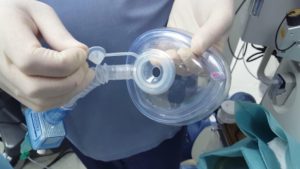Sevoflurane use for sedation during gastrointestinal endoscopy
Sevoflurane use for sedation during gastrointestinal endoscopy in adults?
The problem of creating comfortable conditions for the patient during endoscopic gastrointestinal procedures is obvious. There are two ways to solve this problem:
1) Some authors point out the advantage of performing gastroscopy without sedation with a transnasal endoscope. Using this type of endoscope minimizes discomfort during the procedure (low gag reflex from the root of the tongue and less severe sore throat);
2) Most researchers note the effectiveness and benefits ofusing sedation during this procedure. If the patient has ashort diagnostic procedure (e.g. control gastroscopy), then, as a rule, preference is given to propofol, a short acting intravenous anesthetic. However, the questions arise if a longer endoscopic intervention (removal of the gastric polyp, papillosphincterotomy etc.) is planned.
How should we perform sedation in that case?
Propofol is an easily controlled anesthetic with great advantages in comparison with other intravenous anesthetics. Nevertheless, despite its advantages propofol has also some ‘weak points’, the most important one is respiratory depression. In case of prolonged and repeatedly administrated drug, there is a risk of hypoxemia, which is relevant for patients suffering from chronic cardiac or cerebral diseases.
It is possible to solve the problem of respiratory complications by using a special anesthetic mask with a separate port for the endoscope (endoscopy mask). When sevoflurane sedation is performed spontaneous breathing is practically not inhibited, and continuous oxygen inhalation through the mask provides the proper level of saturation. In addition, an ability to change concentration of sevoflurane in the breathing circuit in a relatively short period of timeallows the anesthesiologist to quickly and effectively control the depth of sedation.

